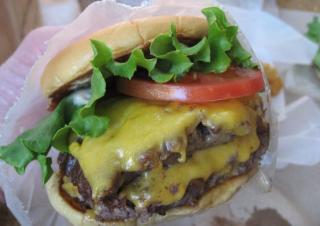What We Talk About When We Talk About “Buyer’s Pain”

Photo: Glenwood
Globe and Mail ROB Magazine
My introduction to the topic of “buyer’s pain” came via a colleague, an editor of an American food magazine, who was describing the excruciatingly long line-ups he had to endure to get a hamburger at the Shake Shack in New York’s Madison Square Park. I’ve never eaten one, but I’ve talked to a few people. This is not a particularly special burger. It has your basic beef patty on a squishy bun plus all the ordinary garnishes: American cheese slice, pickle, lettuce, tomato etc. I’m stymied to think why anyone would wait for up to 2 hours (yes, I actually heard that from someone) all for what another foodie colleague, Amy Rosen, Food Editor at Canadian House & Home magazine described to me as “not mind-blowing”.
Painful, yes. And so, the Shake Shake seems to me a perfect example of what a Carnegie Mellon neurological study published two years ago has shown: that when consumer experience discomfort buying certain products, this frequently enhances the appeal of those same products.
A paradox at first glance, certainly. But on reflection, the endurance of buyer’s pain may be perfectly rational behaviour. Even though I’d never submitted to the Shake Shack ordeal, for example, I could easily relate to the idea of suffering for a purchase. I recall intense discomfort signing my own mortgage document, for example. And it wasn’t merely figurative discomfort, I now understand. The Carnegie Mellon study showed that certain transactions stimulate the pain centers of the brain. High prices produce this effect (or a mortgage with numerous zeros). But other variables do as well. As marketing consultant Roger Dooley wrote in February 2007 on his blog Neuromarketing, it’s the “context of the transaction” that generates negative brain activity. That is, any purchase that is arduous relative to alternatives can have this neurological effect.
The fact that a brand causing pain can succeed is perplexing, admittedly. Salesmen learn early that their job is to make buying easier, not harder. But a whole category of brands defy that wisdom. Ferrari, for example, where your five figure deposit on a 612 Scaglietti only gets you onto the two year wait list. Or the iPhone, for which consumers endure all kinds of deprivation, like lining up at six in the morning as my nephew did recently despite understanding the phone’s antenna issues. And these aren’t isolated examples. Many luxury brands build their reputation on playing hard-to-get. To get their hands on H&M’s Victor and Rolf line, customers literally storm the floor on the release date, grabbing whatever they can. A different example plays out at a Toronto bar/private club called the Toronto Temperance Society. Patrons are required to pay a one-time $300 membership fee to join, a price that isn’t any real kind of barrier. It’s just a pain in the neck.
Why do we put up with it? Neuro-marketers say it’s a matter of cognitive dissonance resolution, drawing on the 1950’s era research by Elliot Aronson of Stanford and Judson Mills of the US Army Leadership Human Research Group. Their seminal study, The Effect of Severity of Initiation on Liking for a Group, found that the harder a group was to join, the more individuals valued their membership in it once membership was obtained. Our brains convince us, in other words, that hard-to-obtain objectives have added value to justify the extra effort we’ve expended getting them.
The explanation is tidy. But it assumes consumers are also deeply irrational. Knowing there are easier-to-access, equivalent-quality alternatives – hundreds of bars in Toronto, or the Porsche Panamera, for example – people wouldn’t waste their money on membership fees or their time on waiting. Certainly nobody would do it three times in one weekend, as Rosen’s colleague did at the Shake Shack on her recent visit to Gotham.
However, if consumers were to derive well-being not from absolute wealth but their position relative to other consumers, then the irrationality disappears. (This idea was discussed in a previous column about “Envy Economics,” and supported by Cornell economist Robert Frank’s research which showed that most people would rather live in a world where they made $100K and their peers made $85K, over one in which they made $110K and their peers made $200K.) In the relative wealth world, consumers don’t compete to acquire the most. They compete to acquire what others would wish to acquire. And they rival with other consumers for goods and experiences that will set them apart and above. In that context, the greater the degree of transaction difficulty, the better. A long line up, in this case, is a two-way signal: It illustrates that many rival consumers want the same thing. It also suggests that if you brave the line, you will have earned bragging rights.
Make no mistake, I’m not suggesting that the Shake Shack designed their business model this way. I’m only pointing out that once the pain threshold was reached – via popularity and the resulting line-ups – the burger joint found themselves in the happy, accidental position of being able to capitalize on consumer rivalry.
For her part, a culinarily-unimpressed Rosen puts it this way: “I think the real appeal is that you’re in Manhattan, lining up in a park, in a bustling city, about to eat familiar food while having the quintessential New York experience.”
A quintessential experience, that is, which eludes most visitors and many locals. An experience that sets you in a select group, willing to bear the pain, to make the necessary investment such that you might reap the status rewards.
